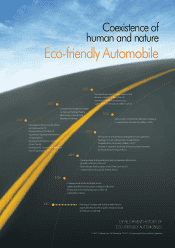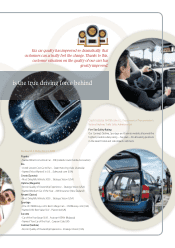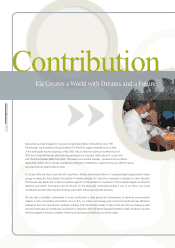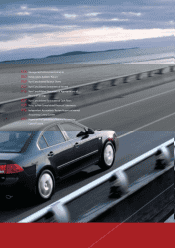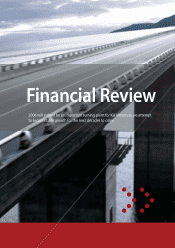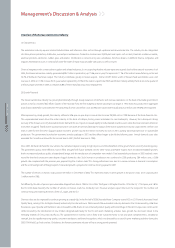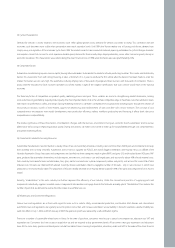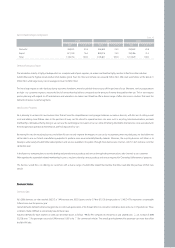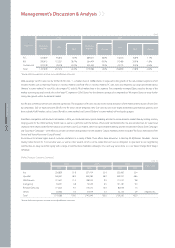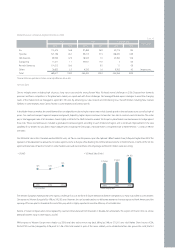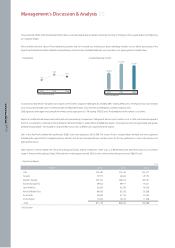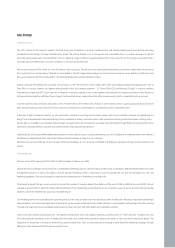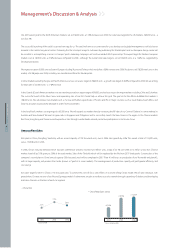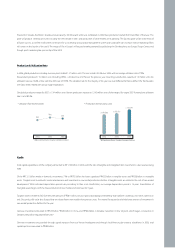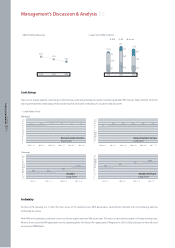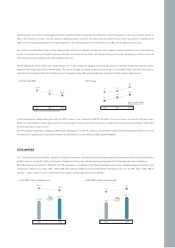Kia 2006 Annual Report Download - page 39
Download and view the complete annual report
Please find page 39 of the 2006 Kia annual report below. You can navigate through the pages in the report by either clicking on the pages listed below, or by using the keyword search tool below to find specific information within the annual report.
(3) Cyclical Characteristics
Demand for vehicles is closely related to the economic cycle. When global growth slows, demand for vehicles also tends to slump. This correlation with the
economic cycle becomes more visible when penetration rates reach saturation levels. Until 1994, the Korean market was still young and vibrant; demand rose
sharply every year regardless of the economic cycle. Since 1995 the market seems to have somewhat matured, exposing automakers to cyclical changes domestic
consumption. Given that cars are the most expensive durable good, demand for them usually drops disproportionately, versus other consumer goods, during an
economic slowdown. This characteristic was evident during the Asian Financial Crisis of 1998, when domestic auto sales plummeted by 50%.
(4) Competitive factors
Automotive manufacturing requires massive capital, leaving a few automakers to dominate the market in all auto-producing countries. This creates substantial entry
barriers for a newcomer. Even with strong financing, it takes a minimum of 4~5 years to produce the first vehicle after the decision has been made to enter the
market. Exit barriers are also very high. The automotive industry employs tens of thousands of people and does business with thousands of contractors. There is
always extreme reluctance to force insolvent carmakers out of the market, in light of the negative ramifications that such a move would have on the national
economy.
The three key factors of competition are product quality, marketing prowess and price. These variables are crucial in strengthening market dominance, curbing
costs and enhancing profitability. Superb product quality, the most important factor of all, is the ultimate competitive edge: it maximizes customer satisfaction levels
with respect to performance, safety, and design. Strong marketing enhances a carmaker’s competitiveness by proactively drawing buyers through the creation of
new product concepts, launch of new models, aggressive advertising, and establishment of sales and after-sales service network. The concept of cost
competitiveness encompasses new model development, mass production efficiency, indirect workforce productivity and financing; it affects both sales price
competitiveness and profitability.
The relative significance of these three factors of competition changes with the business environment. During an economic boom, automakers tend to pursue
added value by focusing on improving product quality. During slow downs, car makers are inclined to make up for lost profitability through cost competitiveness
and greater marketing efforts.
(5) Characteristics related to Securing Resources
Automobile manufacturers need to maintain a steady inflow of raw and secondary materials, including steel and more than 20,000 parts and components to keep
their assembly lines running smoothly. Automotive steel in Korea is supplied by POSCO, the world’s biggest steelmaker, and Hyundai Hysco, an affiliate of the
Hyundai Automotive Group. Auto parts and components are classified into three categories: made in plant (MIP), local parts (LP), and knocked down (KD) parts. MIP
parts, produced by automakers themselves, include engines, transmissions, and various cast and forged parts, and account for about 45% of total material costs.
Parts made by local manufacturers include brakes, tires, glass, electric and electronic system components, rubber and plastic, and account for some 55% of total
material costs. KD parts are imported from abroad. Currently, Korean automakers import a negligible number of KD parts - only in rare instances in which local
production is not economically viable. The proportion of KD parts steadily declined once Hyundai Motor localized 100% of the parts and components for its Accent
model.
Recently, “modulization” in the auto industry has further improved the efficiency of our industry. Unlike the conventional practice of supplying parts and
components individually, suppliers assemble various components into modules and supply them to the final auto assembly plants. “Modulization” thus reduces the
number of parts that are delivered as well as the time it takes to assemble new cars.
(6) Related Laws and Government Regulations
Various laws and regulations are in force with regard to areas such as vehicle safety, environmental protection, and taxation. Both Korean and international
automobile laws and regulations are regularly revised to protect consumers and increase automakers’ accountability. In Korea for example, a product liability law
went into effect on July 1, 2002, and from January of 2003 the approval system was replaced by a self-certification regime.
There are a number of automobile-related taxes in Korea. At the time of purchase, consumers need to pay a special consumption tax, education tax, VAT and
registration tax. Consumers also have to pay an acquisition tax and are required to buy government bonds. All car owners must pay automotive and education
taxes. At the same time, gasoline and diesel prices include four indirect taxes covering transportation, education, roads and VAT. In the wake of the Asian financial


